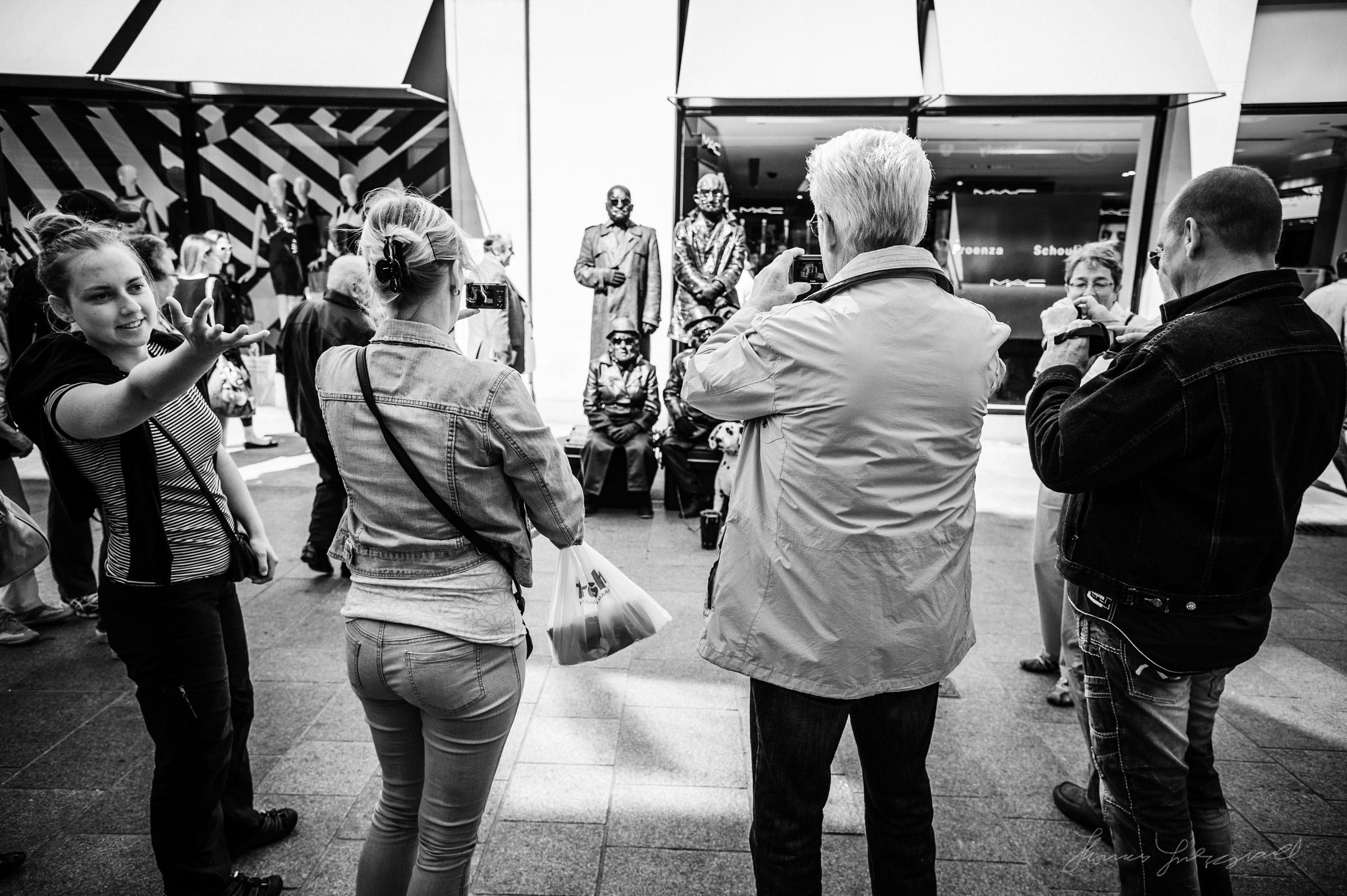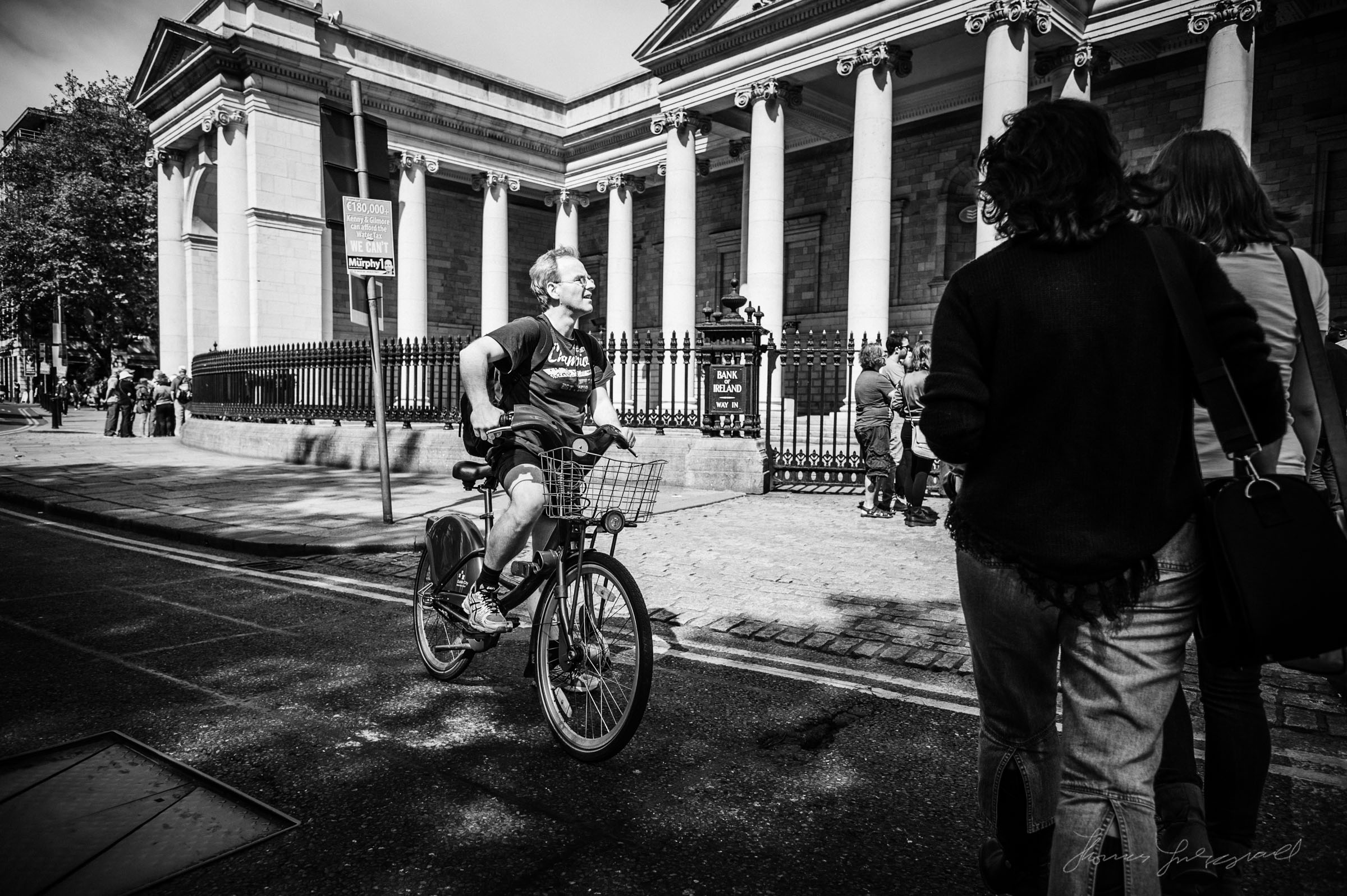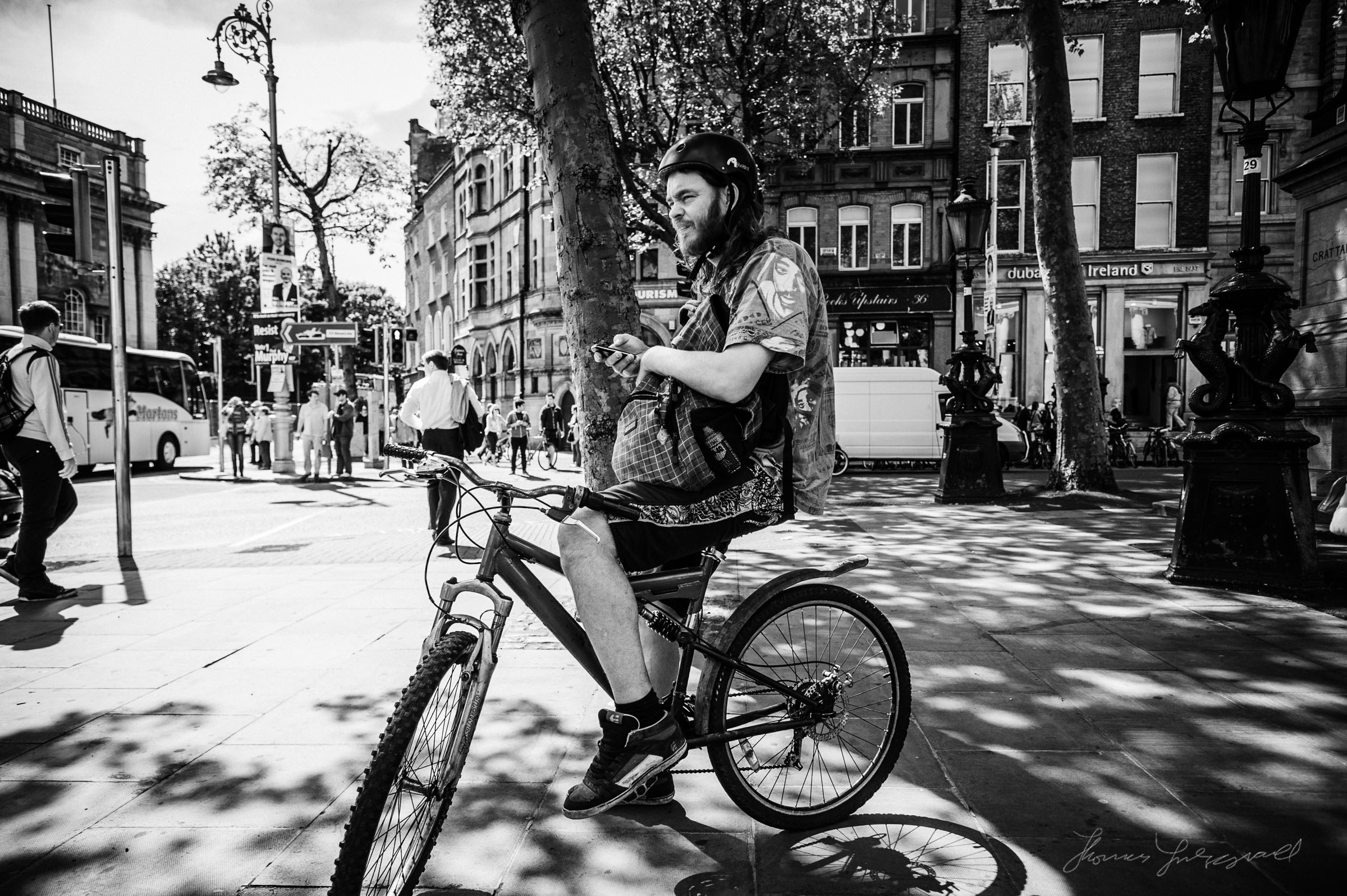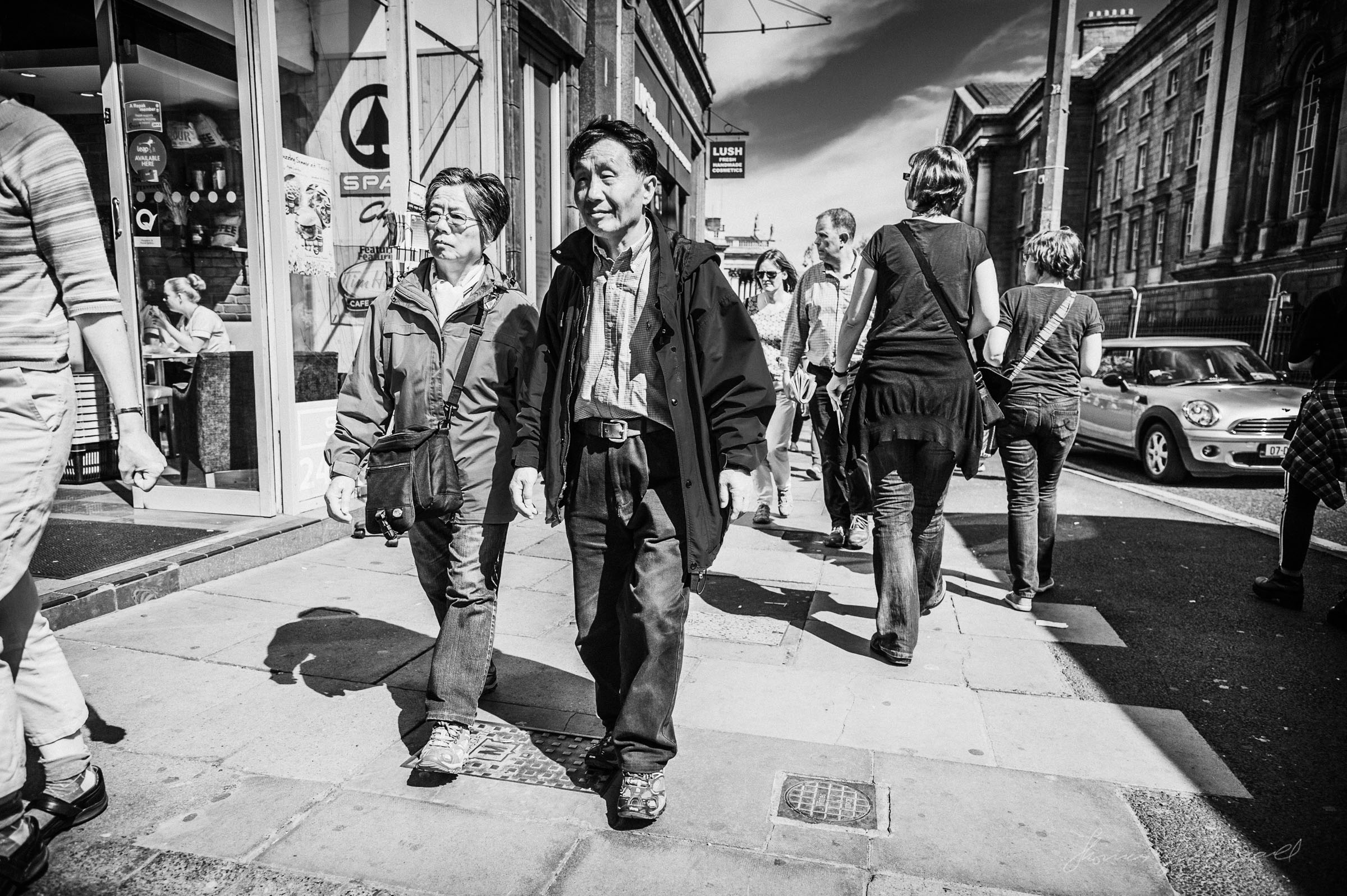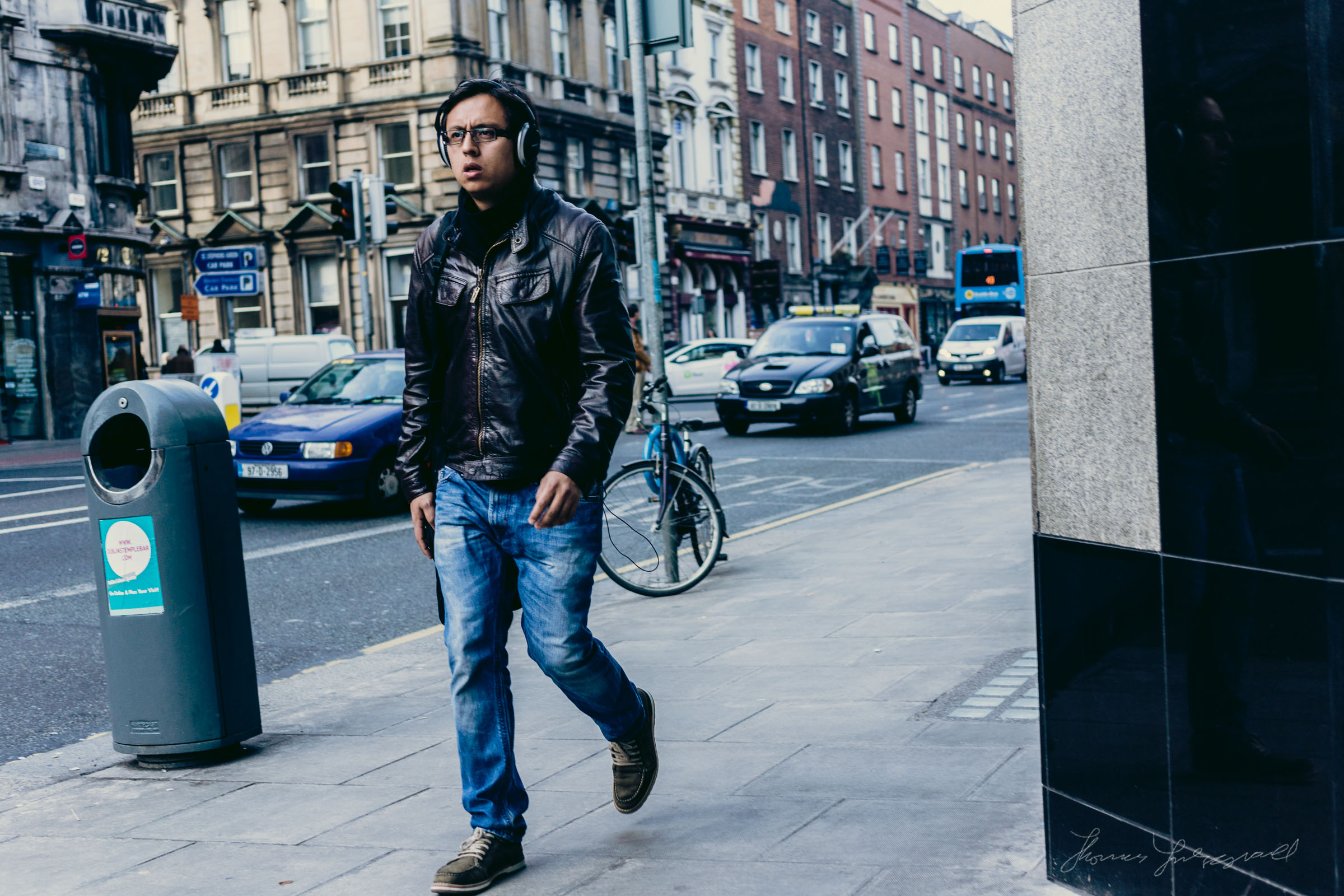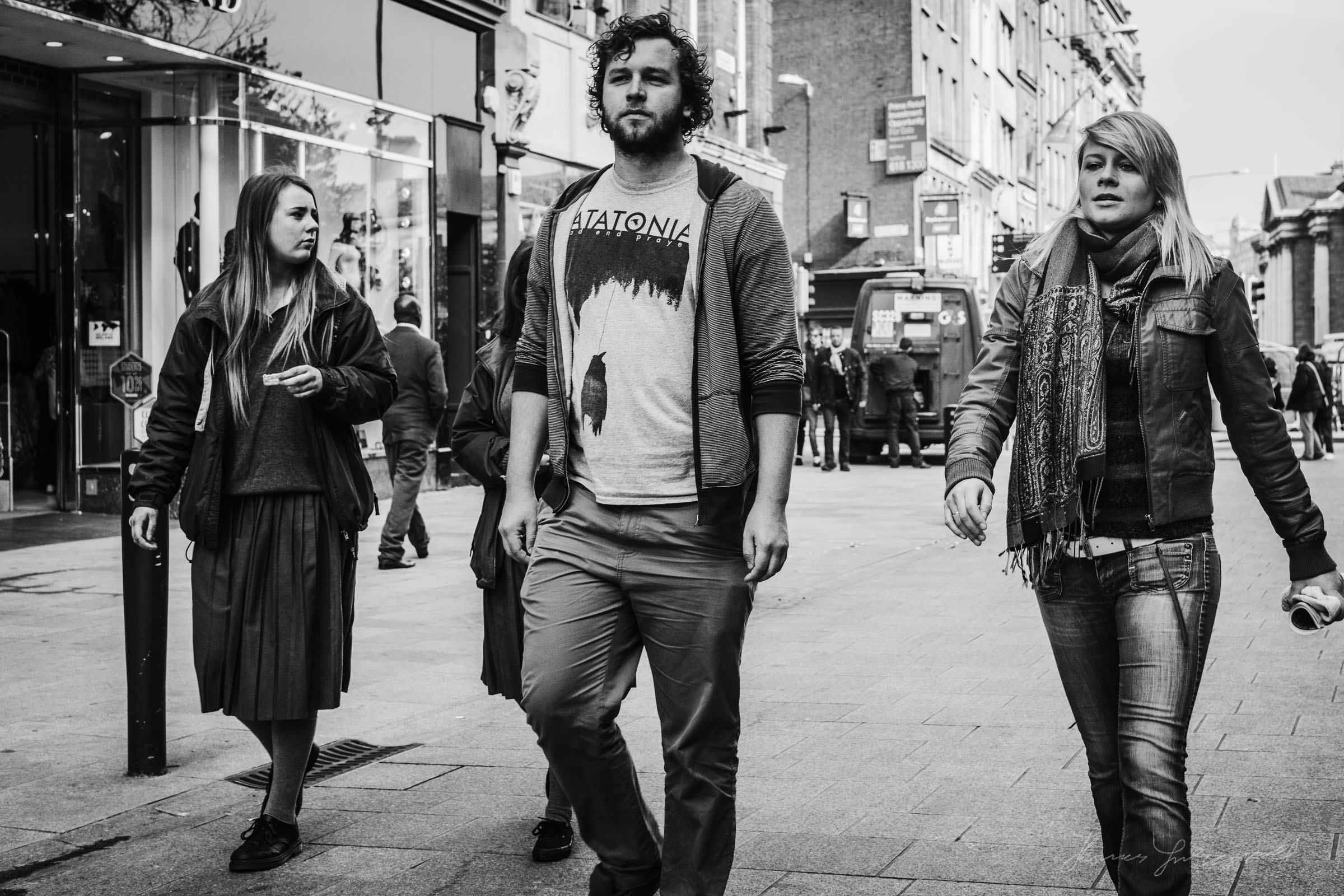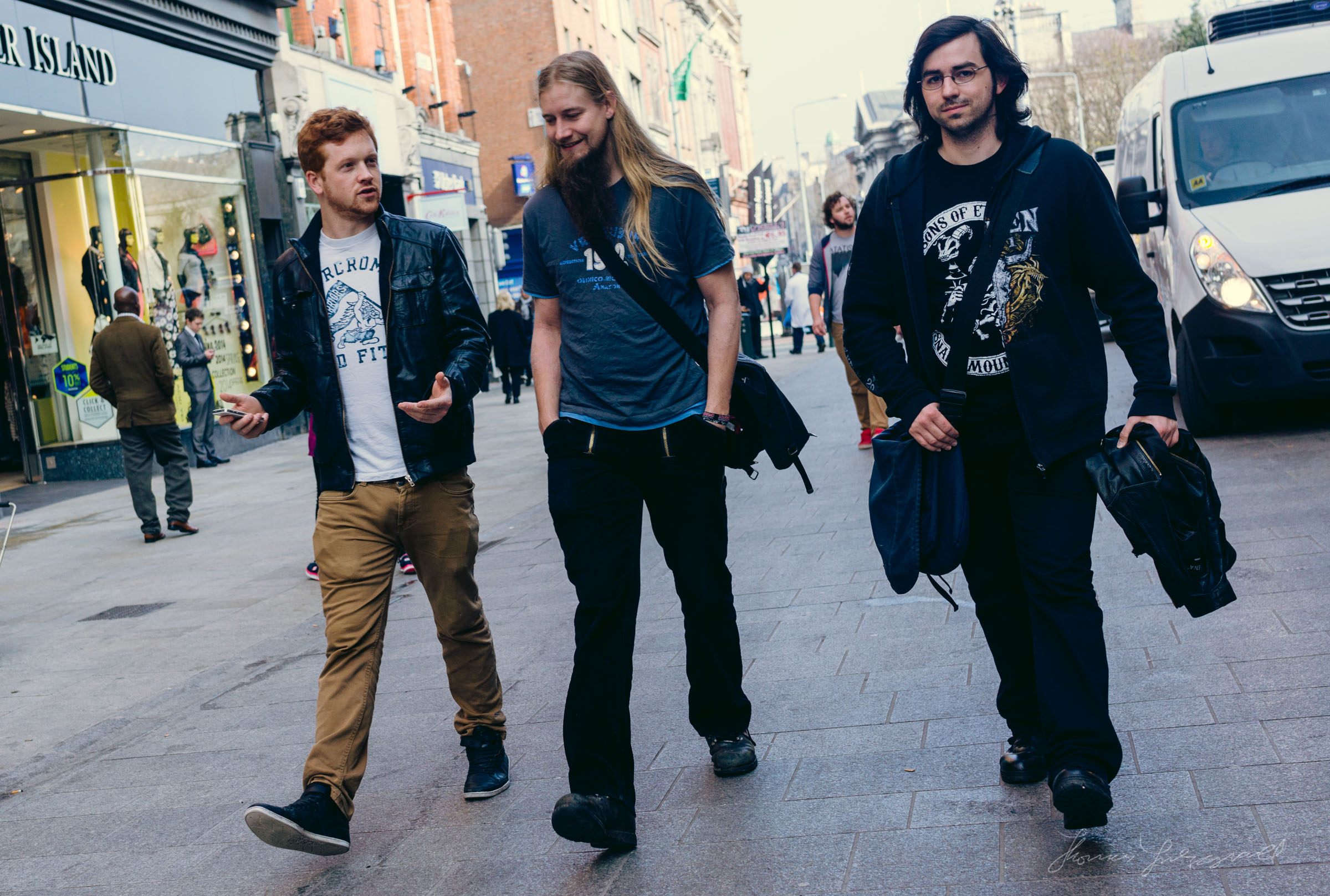Street Shooting from the Hip - Tips for making use of your Camera's Features
One of the types of street shooting that I like to do is to walk along with my camera on a busy street and pick out interesting people form the crowd. I’ll keep my camera on its strap around my waist and “shoot from the hip” so as not to draw too much attention. It’s a tricky skill to master at first but once you get the hang of it, it can be a lot of fun and get you some great shots. There are lots of different techniques and tricks that I one can use when getting candid shots without drawing any attention, and the approach will depend greatly on the capabilities of camera that you are using using.
One of the old school methods is to use zone focussing and switch your camera to manual focus. If you haven’t come across the term before, the idea is that you set a relatively narrow aperture, say f/16 and then you manually pre-focus your lens to maximise the zone that is in focus. Then as you are on the street, you can have a rough idea when people are close enough and you can shoot without having to focus first. While there's nothing wrong with this method, I don't like it for a couple of reasons. First of all, you need to shoot with a narrow aperture, meaning you loose all that lovely depth of field that you bought that expensive fast lens for in the first place. Secondly, if you want sharp shake free shots you’ll end up having to set a very high ISO, especially if you are not in a place with strong light, although with modern cameras this isn’t as much of an issue as it used to be, but I like my shots as clean as possible.
The thing is, there are other ways of getting in-focus shots. Modern auto-focus systems are pretty good, especially on DSLRs. (and the latest round of Mirrorless) If you use autofocus you can get your subjects in focus and still retain the ability to shoot wide open. The trick is to use the right settings. For the examples I’m using here I was shooting with my trusty D700. Normally, I would use manual point selection when shooting on the D700 but, in this case I flicked the switch on the back to auto point selection. In this mode the camera will automatically select the points based on the nearest subject. Because the D700 is reasonably fast at focussing, this works quite well, even if you’re walking and the subject is walking at the same time. It also helps that the D700’s focus points are spread nicely across the frame, so when the subject is off centre, it will still lock on to them.
(These shots - above - were all taken with the camera at waist level and without looking through the viewfinder. To see more for this shoot see this post over on my Photo's Only blog.)
The second thing I did was to use a wide lens. In this case I was using a 24–120 at 24mm. I kept the aperture at f/4. While I know this doesn’t give the narrowest of depths of field, this should work as well if you had a faster lens such as a 24mm f/1.4. The wide angle lens is great for street photography because you can get close to your subjects, but also because when they are in the right spot they are often to one side of the frame, and more importantly, where you’re pointing the camera. As far as they’re concerned you’re not looking at them at all. To the subject it looks like you’re shooting something else altogether. Once you practice this a bit you learn to know when the subject is in the right spot to get them in frame without ever having to look through your viewfinder. You need to anticipate too, especially if everything is moving as you need to give your camera time to focus, but this will depend on the camera and lens combination. Will it work every time? Of course not, but it works more often than not, and in a fluid situation where everything is moving and you're not looking through the viewfinder anyway, there are going to be missed shots. You also still need to make sure your shutter speed is high enough, because even though you’re using a wide angle lens, if you’re subjects are moving and you’re moving, you’ll still need a high shutter speed to freeze everything.
I mentioned at the start that the techniques to use vary greatly on the camera that you’re using. This isn’t a slight against any particular camera, it’s just that you’ll need to adjust your approach depending on your camera’s capabilities. For example, for this method to work you have to have fast and accurate autofocus. I will often shoot on the street using one of my smaller mirrorless cameras. For example, if I’m using the Fuji X100 (the original, not the “s”) I couldn’t do this technique with that camera because the focus is too slow and the shutter lag is too long. That’s not to say that it or any other specific camera is not suitable for street shooting, it’s just that I wouldn’t use this technique with it. Id use a different approach.
Another example is if I’m using my Sony Nex–7. In that case, the focus is faster, but I wouldn’t use this approach because it’s still a little laggy still. However, with that camera I will sometimes use face detection. I know this is probably a sin to purists out there, and many consider this feature a gimmick, but it can actually work well for this kind of candid photography in the right situation. Again, it gives you the ability to shoot wide open. I even use it on longer lenses. What I will often do is have the screen flipped up so I can point the shot roughly in the right direction, with the camera still held low, and if you time it right the camera will lock on to the nearest face and focus.
(Above 3 shots taken on a Sony Nex-7 30mm lens (50mm equiv. roughly) with Face Detect Autofocus turned on)
There’s a certain mentality that says that you should only do things manually or the way they were done in the film days to be doing it right, but you have all this advanced technology in your hands so why not make it work for you. There’s nothing wrong with that. It just takes a little bit of practice and experimentation to get it to do what you want it to do, and to make the most from it. As I’ve said before, get the shot however you want to, it’s the finished product that matters at the end of the day.
Please Help Support This Site
I am a fine art Photographer and do not shoot commercially. If you like what you read here and want to help support the site, then please consider buying a Print, checking out my new Lightroom Presets



